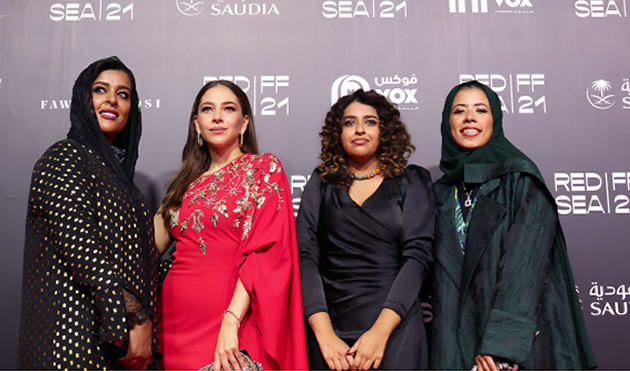
It was only as recently as 2018 that the first cinemas were permitted to open again in Saudi Arabia after being banned in the 1980s.
And now the country is wasting no time catching up and possibly even overtaking other countries when it comes to film production and exhibition. Saudi Arabia recently announced a huge investment of $64 billion in its film industry, which will see it competing with Hollywood while trying to attract the global film sector to use Saudi’s landscapes and talent.
Unspoilt landscapes like those of UNESCO World Heritage Site Al-Ula are a draw for filmmakers looking for the perfect backdrops for their big budget masterpieces. By declaring itself open for business Saudi Arabia is making a big cultural connection with the rest of the world, and transforming its image at the same time.
The first ever Red Sea Film Festival took place in December 2021, making a big statement about the film sector’s intentions and presenting an international focus. It’s not the only major change in the country when it comes to lifestyle and entertainment.
Under Crown Prince Mohammed bin Salman, Saudi has done away with gender segregation in settings such as restaurants, and has scrapped the ban on women being allowed to drive. Festivals and gigs have been introduced to the nation’s social calendar, and there is an openness to a kind of entertainment creation and consumption that hasn’t been part of Saudi’s story until now. But this is not simply about culture for culture’s sake.
Culture is often misrepresented as being a ‘nice to have’ , an additional extra on top of other more weighty industries.
The truth, however, is very different.
We need only look at some statistics from the USA’s National Endowment for the Arts and the Bureau of Economic Analysis for an example of how important culture really is:
- In 2019 (pre-pandemic), the sector had been expanding, and production of arts and cultural goods and services in the US added 4.3% to the country’s GDP, totalling $919.7 billion. This is a greater financial contribution than that of construction, transportation, mining and agriculture
- During the three years from 2017-2019, the value added to the GDP from the arts and cultural sector grew at a higher rate than the US economy as a whole
- The arts and cultural sectors employed 5.2 million people on payroll, not including self-employed contractors
Viewed through an economic lens, the decision to make such a major investment in the Saudi arts, culture and entertainment industry makes perfect sense.
Just as Kuwait is making moves away from a reliance on oil by invsting in smart cities, so is Saudi Arabia setting its sights on replacing fossil fuels with film. And this kind of investment will not only benefit those with the skills and ambition to work in film, but rather will spark the growth of an ecosystem which is required for film production and exhibition to happen.
Technology, construction, transport, accommodation, catering and infrastructure are all required to support film production.
Exhibition is also a larger economy than simply cinemas and festivals. Should Saudi Arabia become a destination for film lovers to enjoy watching film and visiting film locations, there is a travel, tourism and hospitality sector that will benefit from this investment too.
Crucially, this opens the door to further investment in Saudi Arabia from around the world, as the country plugs into a well established industry that has a proven track record for transforming the fortunes of locations almost overnight.
The knock-on effect will be huge and positive for so many other sectors as a result of this investment, and although film may seem on the surface to be a frivolous thing on which to spend $64 billion, this could be a real blockbuster move for Saudi Arabia.
